Categories
Subjects
Authors
Artists
Venues
Locations
Calendar
Filter
Done
December 8, 2023 – Review
2nd Sharjah Architecture Triennial, “The Beauty of Impermanence: An Architecture of Adaptability”
Nick Axel
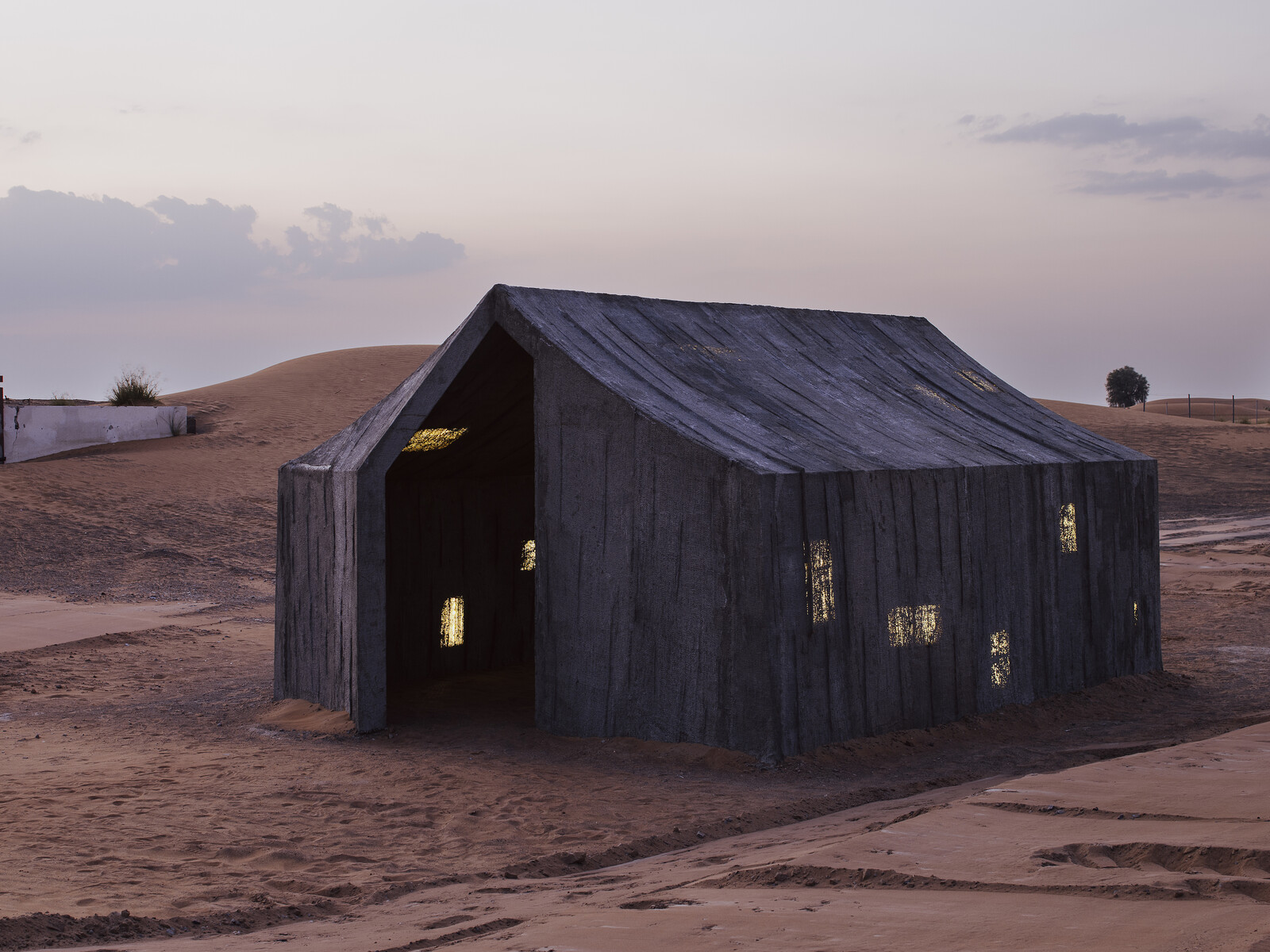
The second Sharjah Architecture Triennial—featuring twenty-nine architects, artists, and designers across two main venues (the Al Qasimiyah School and Old Al Jubail Vegetable Market) and a handful of off-site locations—reckons with the cultural and ecological legacies of colonialism and modernity. The work shown does not, in the words of its curator, the Nigerian architect Tosin Oshinowo, simply acknowledge a wrong or apologize for the past. Instead, the contributions demonstrate modes of practice that build new worlds from the ruins of the present. Ideas of “impermanence” and “adaptability” here describe creative responses to conditions of scarcity that draw on ancestral ways of knowing and resourceful forms of making, and “beauty” as a celebration of survivance.
This triennial is in many ways a spiritual successor to Lesley Lokko’s international exhibition at the most recent Venice Architecture Biennale, “The Laboratory of the Future.” Beyond the handful of contributors to appear in both, in these exhibitions architecture is often a starting point, theme, and subject more than an end with pre-defined means. This approach liberates the exhibition from the representational conventions of architectural media (drawings, diagrams, models, maps, and photographs) in favor of immersive installations, sculptural works, films, and more that overcome the alienating …
February 21, 2023 – Review
Sharjah Biennial 15, “Thinking Historically in the Present”
Ben Eastham
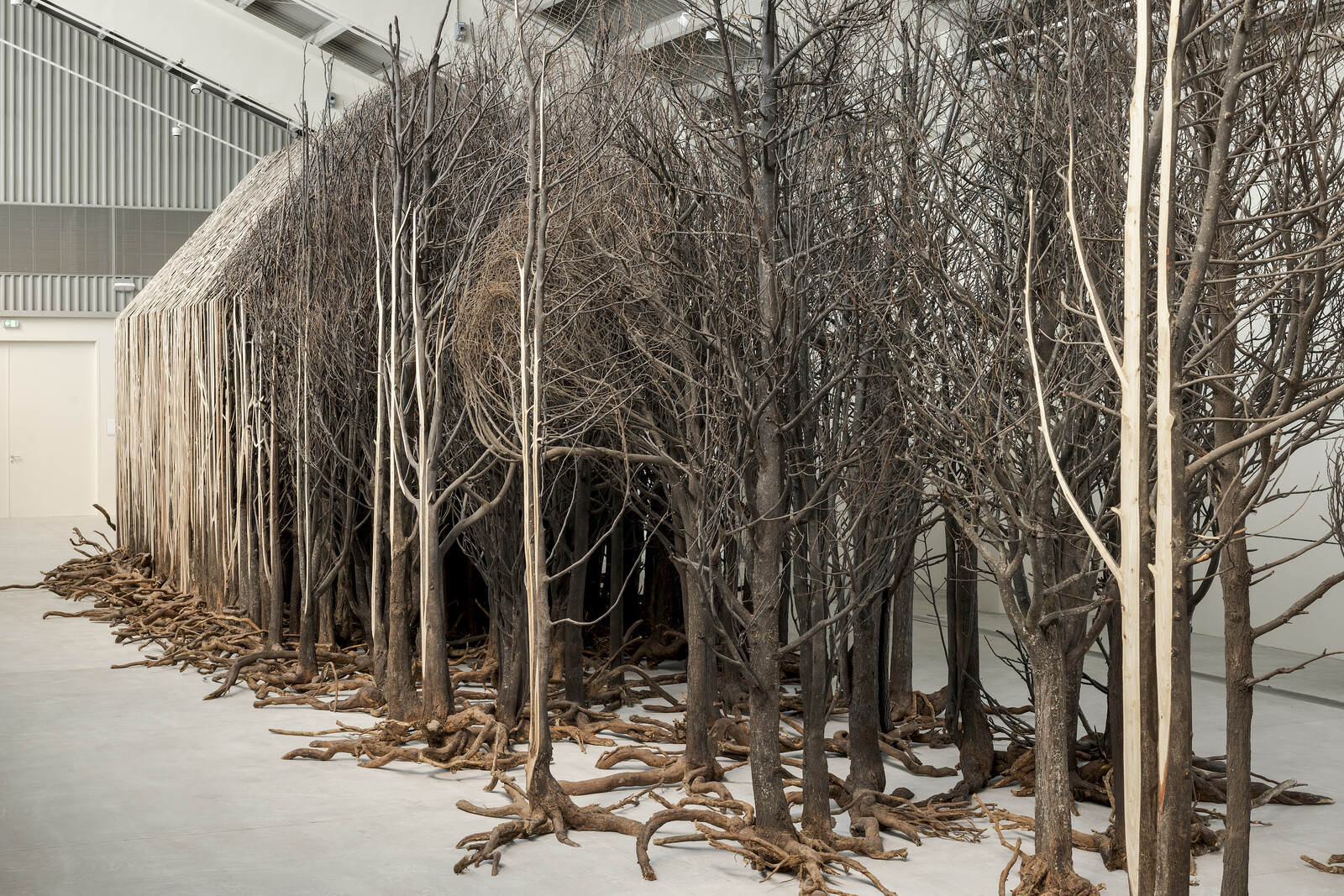
On her first visit to Africa in the early 1970s, Angela Davis was surprised to find her speeches interrupted by dancing. Being pulled from the lectern whenever an idea moved her audience showed the philosopher and activist, she tells filmmaker Manthia Diawara in a work commissioned for the fifteenth edition of the Sharjah Biennial, how damaging is the western separation of intellectual speculation from embodied action. She proposes art as the form through which these two expressions of human freedom are reconciled. How it might do so is the question that haunts this sprawling exhibition of over 150 artists “conceived” by the late Okwui Enwezor and curated by Hoor Al Qasimi.
The difficulty is encapsulated by Diawara’s Angela Davis: A World of Greater Freedom (2023), which joins incendiary footage of Nina Simone singing “Mississippi Goddam” (1964) to Davis’s testament that the song did more to mobilize resistance than a thousand books. Simone’s performance leaves no room to doubt it, but the black box in which the film is screened leaves no space in which to dance it. Similarly, Bouchra Khalili’s The Circle (2023) combines accounts of the campaigns by which French-Arab workers asserted their rights in the early 1970s with …
November 23, 2019 – Review
1st Sharjah Architecture Triennial, “Rights of Future Generations”
Melissa Gronlund
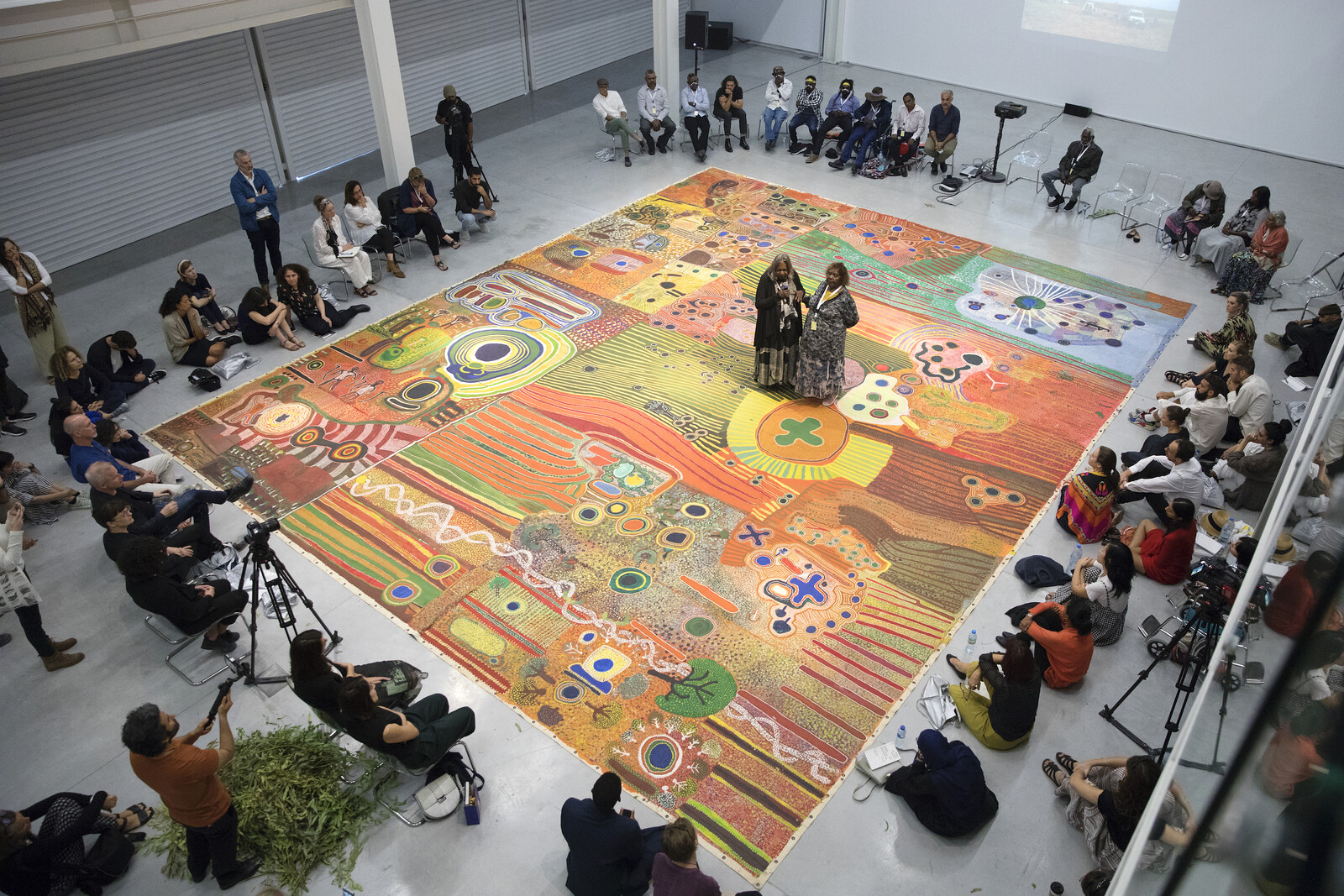
The first Sharjah Architecture Triennial brings to the dusty city an art and architecture crowd with varying expectations. Architecture is conceived here in its wider sense—urban studies, environmental sustainability, design—and curator Adrian Lahoud, the dean of the architectural school at the Royal College of Art in London, has widened it further, curating an inclusive and deliberately experimental exhibition.
Lahoud’s project, “The Rights of Future Generations,” rests on the premise that, as Lahoud put it in an introduction to one of the presentations, fighting for the environment is not a new trend out of London and New York, but something which “black and brown people have been doing for the last century.” Throughout the triennial, representatives from a variety of indigenous communities—people coming from regions as diverse as the Chilean mountains, the Great Sandy Desert of Australia, and stretches of Upper Egypt—and researchers from threatened or developing communities in places such as Gaza, Bangladesh, Senegal, and Iran presented strategies of adapting to climate change and ongoing colonialism in talks, performances, and exhibitions. Importantly, the triennial aims for the sweet spot between research and activism, with the goal of affecting change on the ground, rather than simply presenting a display of potential …
March 18, 2019 – Review
Sharjah Biennial 14: “Leaving the Echo Chamber”
Melissa Gronlund
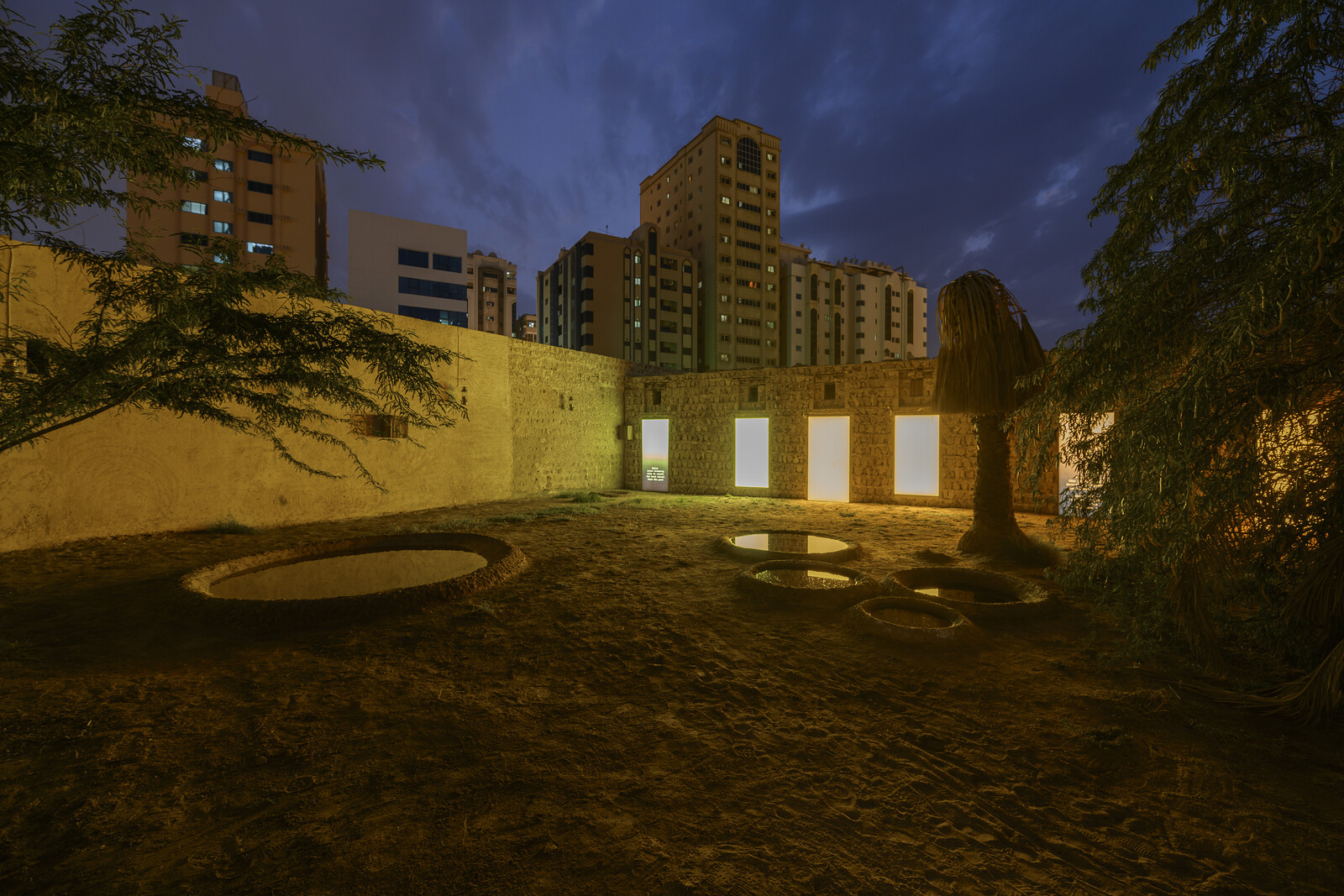
What was reading life like before the “echo chamber,” the term for the bubble in which one’s own biases are rehearsed and confirmed by other like-minded people? It was not as dominated by single subjects, probably a bit calmer, more demanding in terms of homework and criticality, and with the odd issue you’d want to pass by. The Sharjah Biennial 14—titled “Leaving the Echo Chamber” and put together by Zoe Butt, Omar Kholeif, and Claire Tancons, each of whom has curated their own section—doesn’t have much to do with algorithms, the singularity, or other advances from digital technology. Despite itself, due to the diversity of geographical regions and formal types of work overseen by its curatorial trifecta, this is a biennial with surprises, broad scope, and solid curation.
Disembodiment is a key theme throughout Kholeif’s section, “Making New Time,” which is anchored in a strong historical painting show in the Sharjah Art Museum and a more politically driven display at Bait Al Serkal. The painting exhibition opens on the geometric works of Anwar Jalal Shemza, a modernist artist who worked in Lahore, and moves toward formal dissolution: from the Turkish artist Semiha Berksoy’s scratchily rendered figures to the thick …
January 8, 2019 – Review
Amal Kenawy’s “Frozen Memory”
Ania Szremski
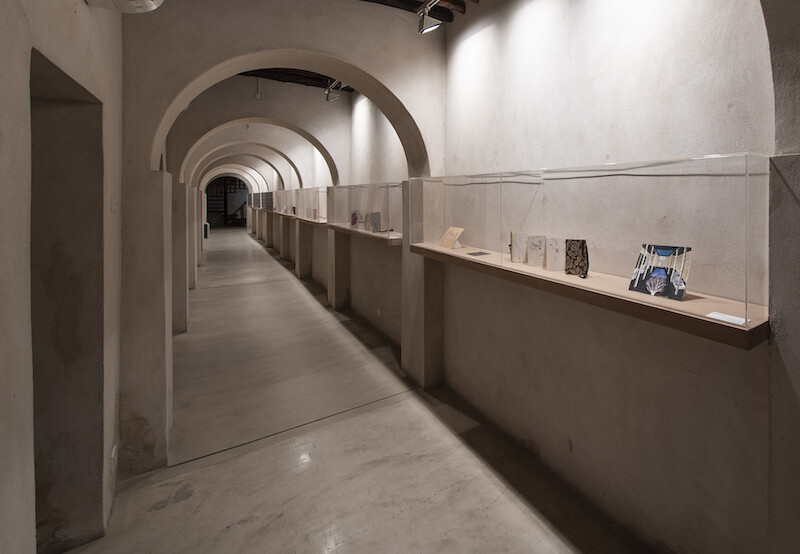
By the time I knew her in 2009, before her death in 2012, at only 37, Amal Kenawy seemed to gleam with elite art world prestige, the kind that one assumes would protect against forgetting. The Egyptian artist’s darkly eerie, fungible, genre-defying productions were shown in major exhibitions and biennials around the world, and now, a retrospective at the Sharjah Art Foundation (SAF), “Frozen Memory,” seems to attest to the continued endurance of her legacy. Co-curated by SAF’s director Hoor Al Qasimi and Suha Shoman, the executor of the artist’s estate, the exhibition brings together Kenawy’s major works: 11 videos, several paintings and drawings, together with volumes of archival material, from notebooks to sketches to funding proposals, spread out among the many chambers that wrap around the two-story courtyard of the Bait Al Serkal.
The show is presented non-chronologically, opening with one of Kenawy’s late pieces, the one most often shown abroad: the controversial Silence of the Sheep (2009), her first (and only) performance in public space. Silence of the Sheep saw Kenawy lead a group of a dozen people (artists and friends, but also day laborers hired for the job) as they crawled through the streets of downtown Cairo. The …
March 16, 2017 – Review
Sharjah Biennial 13: Tamawuj
Melissa Gronlund
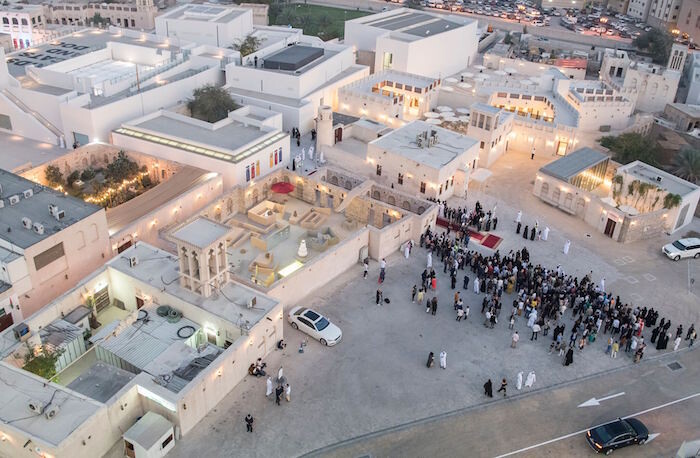
Bottles of seawater sit among makeshift red flags on charred concrete breezeblocks. “It’s like a fire,” says the artist, Dineo Seshee Bopape, of her installation, +/– 1791 (monument to the haitian revolution 1791) (2017), which is scattered about the courtyard of one of Sharjah Art Foundation’s warren of spaces. Small black lumps, formed by molding wet clay in the artist’s fist, are arranged in neat rows; piles of herbs are scattered about. The centerpiece of the courtyard—the fire-like construction—refers to the idea that the Haitian Revolution was brought on by the curse of a Voodoo priestess; the water, herbs, circles and votives elsewhere call on other faith systems of Africa and the African diaspora. Seawater is often said to have healing properties, while fuel can “release the spirit from bondage,” as Bopape puts it. The work is a depiction, and perhaps a performance, of spiritual opposition.
Indigenous belief systems, cybernetics, herbal remedies, Sufi meditations, and proto-monetary methods of exchange abound in Christine Tohmé’s Sharjah Biennial 13, titled “Tamawuj,” an Arabic word meaning a swelling or a rise. The exhibition is laid out across the Sharjah Art Foundation spaces in the center of Sharjah, in a few locations refurbished by the foundation …
March 14, 2013 – Review
"Re:emerge, Towards a New Cultural Cartography," Sharjah Biennial 11
Antonia Alampi

A Qawwali song in Urdu fills one of the narrow lanes of the new Sharjah Art Foundation spaces. It has been interpreted by a group of about thirty Pakistani musicians, sitting on the floor, while art professionals arrived en masse for the most anticipated event in the region. The music is a part of Dictums 10:120 (2013), a new work by Wael Shawky, one of the many new commissions by the Sharjah Art Foundation, which deals with what we might call the art-world language, that strange sub-species of English which, despite its universal ambitions, often ends up acquiring a solipsistic tone. But that’s just one of the many idiosyncrasies of the contemporary art world that are here subtly evoked. The composition—in Urdu, the most commonly spoken local language, also intelligible to those who speak Hindi—is the result of a reflection, discussion, and reconstruction of the curatorial statement by the workers of the biennial itself.
Here, on the other side of exclusion, for once, the Pakistanis are the only ones to have linguistic access to the work, gaining “authority for a time,” as the artist himself affirms. The almost ghostly role and position of visibility and invisibility of the workers is also …
March 24, 2011 – Review
Sharjah Biennial: 10 Plot for a Biennial (16 March-16 May, 2011) and Art Dubai (16-19 March, 2011)
November Paynter
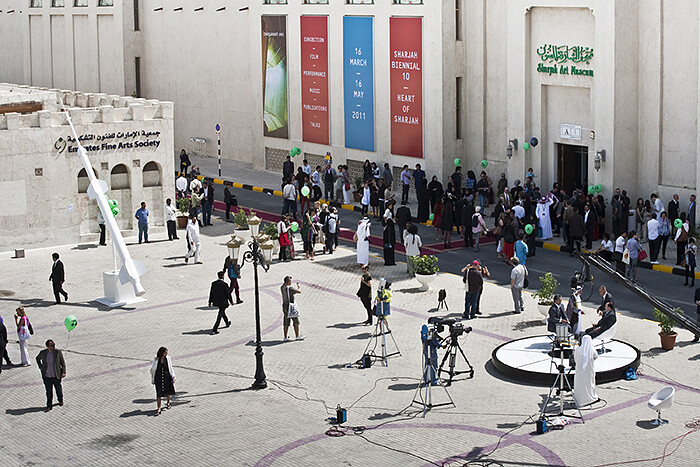
There are few occasions in the art world calendar where a commercial fair and a biennial are as closely aligned in time and space as the Sharjah Biennial and Art Dubai. March 16th saw the tenth edition of the Sharjah Biennial titled “Plot for a Biennial”—curated by Suzanne Cotter and Rasha Salti with Associate Curator Haig Aivazian—open to a busy international crowd, many of whom would shift emirates that very evening to attend the opening of an event half its age with a very different agenda: Art Dubai. With the 10th Sharjah Biennial involving in excess of 80 artists and other cultural actors, it was no coincidence that many were also represented at the fair.
Treating the Sharjah Biennial as a script for a film—”replete with plot and characters”—and a series of key themes, Cotter, Salti and Aivazian opened the floor to film-makers, writers and performers, as well as artists. Suggestions for characters and scenes could be sourced within various art works throughout the biennial, but the rhythm of an accumulating plot was less forthcoming. As in previous renditions of this biennial, and largely due to the layout of the museum and peripheral venues, many of the installations occupy very separate …
